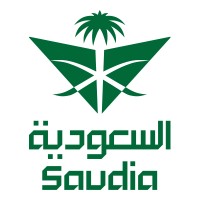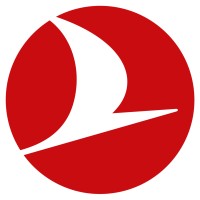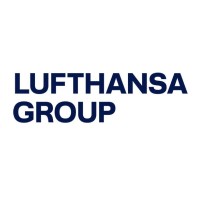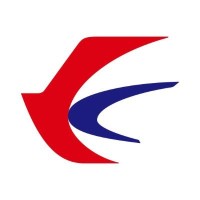Company Cyber Security Posture
NANA
NA Company Details
NA
NA
NA
NA
NA
NA
Scan still pending
NA
NA
Between 200 and 800
This score is AI-generated and less favored by cyber insurers, who prefer the TPRM score.
 NA Global Score
NA Global Score.png)

Company Scoring based on AI Models
| Model Name | Date | Description | Current Score Difference | Score |
|---|---|---|---|---|
| AVERAGE-Industry | 03-12-2025 | This score represents the average cybersecurity rating of companies already scanned within the same industry. It provides a benchmark to compare an individual company's security posture against its industry peers. | N/A | Between 200 and 800 |
Company Cyber Security News & History
| Entity | Type | Severity | Impact | Seen | Url ID | Details | View |
|---|
Company Subsidiaries

NA
Access Data Using Our API

Get company history
.png)
NA Cyber Security News
Google Exposes GLASSBRIDGE: A Pro-China Influence Network of Fake News Sites
The disclosure comes as Google's Threat Intelligence Group (TAG) shed light on a pro-China influence operation (IO) called GLASSBRIDGE that ...
Aedas architects news: architecture office designs
Aedas Architects - architecture news, images of new buildings in China, Dubai, USA etc - American design office, architectural practice.
After massive IT outage for airlines and health care, officials see signs of recovery
A problem with Microsoft Windows caused sweeping outages affecting hospitals, airlines, emergency services and people at home. The error — ...
China unscathed by CrowdStrike-Microsoft outage on back of cybersecurity drive
Mainland China's self-sufficiency drive in cybersecurity enabled the world's second-largest economy to emerge unscathed from Microsoft's global ...
Infrastructure Connect: A joint new era for Hong Kong and Shenzhen
Transport infrastructure plays a critical role in facilitating economic development. This article explores the Government's transport infrastructure ...
Shenzhen Airlines flies “sister city” route to Barcelona
The new route will be Shenzhen Airlines' second direct flight to Europe after its London Heathrow route was inaugurated in 2018.
Alstom’s driverless airport APM enters service at Shenzhen Bao’an International Airport
The APM opening at Shenzhen Airport is another contribution of Alstom's Chinese joint ventures in the field of China airport infrastructure, ...
Shenzhen airport tightens COVID-19 measures as China logs 30 new cases
The airport in China's southern city of Shenzhen said on Saturday that anyone entering the premises must show a negative virus test taken ...
Airbus awarded new orders in China
EN-Airbus awarded new orders in China. Airbus confirms the signature of orders with Air China, China Eastern, China Southern, and Shenzhen ...

NA Similar Companies

SAUDI AIRLINES
At Saudia Group, we're on a mission to inspire people to go beyond borders. Our purpose is rooted in unlocking human potential and connecting the world in ways never thought possible. We are committed to reshaping the aviation ecosystem in our region and beyond, by embracing innovation and a custome

Garuda Indonesia
Carrying out the mandate as the national flag carrier of Indonesia for more than seven decades, Garuda Indonesia committed to connecting the archipelago while carrying the nation’s image to the world stage. With a top-notch fleet and a distinctive service concept highlighting Indonesian hospitality

Turkish Technic
Turkish Technic (IATP: TKT), an association of Turkish Airlines group companies (Istanbul Stock Exchange: THYAO), is one of the world’s leading aviation services providers, where comprehensive maintenance, repair, overhaul, modification and reconfiguration services are performed with a highly qual

British Airways
As a global airline and the UK’s flag carrier, British Airways has been flying its customers to where they need to be for more than 100 years. The airline connects Britain with the world and the world with Britain, operating one of the most extensive international scheduled airline route networks to

Lufthansa Group
The Lufthansa Group is an aviation company with operations worldwide. It plays a leading role in its European home market. With 109,509 employees, the Lufthansa Group generated revenue of EUR 32.770m in the financial year 2022. The Passenger Airlines segment includes, on the one hand, the network a

China Eastern Airlines, North America
As one of the three major air carriers in China, headquartered in Shanghai, China Eastern Airlines operates 111 domestic and overseas branches across the globe. Flying a fleet of 730 aircraft which is one of the youngest fleets in major airlines worldwide. Moreover, it boasts the largest-scale in-fl

Frequently Asked Questions
Explore insights on cybersecurity incidents, risk posture, and Rankiteo's assessments.
NA CyberSecurity History Information
How many cyber incidents has NA faced?
Total Incidents: According to Rankiteo, NA has faced 0 incidents in the past.
What types of cybersecurity incidents have occurred at NA?
Incident Types: The types of cybersecurity incidents that have occurred include .
Additional Questions
What Do We Measure?
















Every week, Rankiteo analyzes billions of signals to give organizations a sharper, faster view of emerging risks. With deeper, more actionable intelligence at their fingertips, security teams can outpace threat actors, respond instantly to Zero-Day attacks, and dramatically shrink their risk exposure window.
These are some of the factors we use to calculate the overall score:
Identify exposed access points, detect misconfigured SSL certificates, and uncover vulnerabilities across the network infrastructure.
Gain visibility into the software components used within an organization to detect vulnerabilities, manage risk, and ensure supply chain security.
Monitor and manage all IT assets and their configurations to ensure accurate, real-time visibility across the company's technology environment.
Leverage real-time insights on active threats, malware campaigns, and emerging vulnerabilities to proactively defend against evolving cyberattacks.




